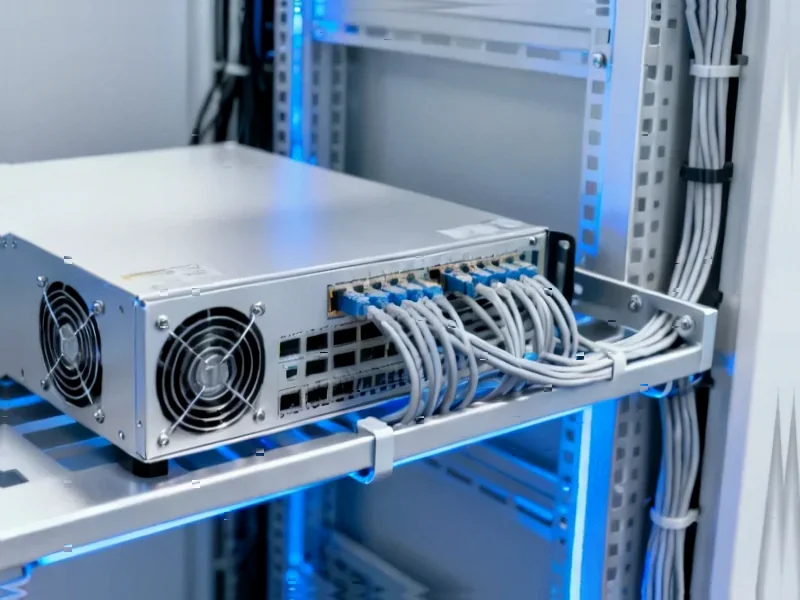According to TheRegister.com, Cisco has launched its “Unified Edge” platform featuring a 3U chassis called the UCS XE9305 that’s just 18 inches deep, designed specifically for space-constrained edge locations. The system includes half-width UCS servers with Xeon 6 processors and Catalyst 8200 routers with firewalls that fit into five available bays connected by a 25G backplane. Cisco’s Jeremy Foster, general manager of Compute, explained the platform targets organizations with many distributed locations like retail chains and manufacturers, and can be managed using Cisco’s Intersight SaaS tool with support for Nutanix, Red Hat, and VMware stacks. The product is available for order now and will begin shipping in December, with Cisco positioning it as a solution for staff without IT skills to maintain through hot-swappable components and remote management capabilities. This move represents Cisco’s latest attempt to disrupt markets where it believes incumbents aren’t meeting customer needs.
The Edge Computing Market Is Fragmenting
Cisco’s entry into edge infrastructure comes at a critical inflection point where the edge computing market is rapidly evolving from simple remote servers to sophisticated distributed computing platforms. While companies like HPE and Dell have focused on ruggedized servers for edge locations, Cisco is betting that customers want integrated solutions rather than assembling components from multiple vendors. The edge computing market is projected to grow significantly, with Gartner estimating that by 2025, 75% of enterprise-generated data will be created and processed outside traditional centralized data centers. This creates both opportunity and complexity for organizations managing hundreds or thousands of distributed locations.
Where Cisco Thinks It Can Beat Traditional Server Vendors
Cisco’s strategy appears to be targeting the gaps in traditional server vendors’ offerings – specifically the integration between compute, networking, and security. Companies like HPE, Dell, and Lenovo have strong server portfolios but typically rely on partnerships for networking and security integration. Cisco’s approach leverages its core networking expertise and security capabilities through products like the Catalyst 8200 router with built-in firewall. This integrated approach could be particularly compelling for organizations that have struggled with managing multiple vendor relationships and dealing with finger-pointing when issues arise in distributed edge environments. The company’s extensive experience in networking gives it credibility in understanding the unique challenges of edge connectivity and security.
The Real Innovation Is in Management, Not Hardware
While the physical hardware innovations like the 18-inch depth and portrait-mode mounting are notable, the more significant advancement is in the management capabilities through Intersight. Managing thousands of distributed edge locations presents unique operational challenges that traditional data center management tools weren’t designed to handle. The ability to remotely manage and troubleshoot systems without requiring skilled IT staff on-site could be a game-changer for retail chains, manufacturing facilities, and other distributed operations. This approach acknowledges that edge computing isn’t just about putting servers in remote locations – it’s about creating an operational model that scales across potentially thousands of sites with limited technical staff.
The Quiet AI Play in Edge Computing
Cisco’s inclusion of GPU capabilities in some Unified Edge servers signals where the company sees edge computing evolving. While current AI workloads often focus on training in centralized data centers, inference workloads are increasingly moving to the edge for applications like computer vision in retail, manufacturing quality control, and real-time analytics. As Intel and other CPU vendors improve their inference capabilities, edge locations will become more capable of handling sophisticated AI workloads locally rather than sending data back to central locations. This positions Cisco well for the next wave of edge computing where AI and machine learning become dominant workloads.
What This Means for the Competitive Landscape
Cisco’s move creates pressure on both traditional server vendors and emerging edge specialists. For HPE, Dell, and Lenovo, the challenge will be matching Cisco’s integrated networking and security story or developing stronger partnerships to provide similar integrated solutions. For networking competitors like Juniper and Arista, Cisco’s compute integration represents a threat to their standalone networking business at the edge. The timing is particularly interesting as many organizations are reevaluating their edge strategies post-pandemic, with distributed operations becoming more critical to business continuity. Cisco’s ability to execute on this vision will depend on whether customers value the integrated approach enough to potentially standardize on a single vendor for their edge infrastructure needs.




